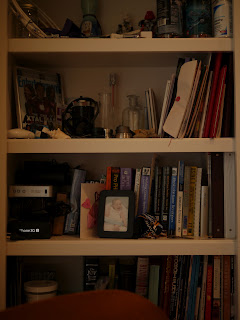| Make | Model | Low-Light ISO Score |
| Panasonic | DMC-G3 | 667 |
| Panasonic | DMC-GH3 | 812 |
| Canon | 60D | 813 |
| Nikon | D5000 | 868 |
| Panasonic | E-P5 | 895 |
| Canon | 70D | 926 |
| Nikon | D5100 | 1183 |
| Nikon | D5300 | 1338 |
| Nikon | D610 | 2925 |
A few micro four thirds cameras are in the chart, including my trusty Panasonic DMC-G3, as well as the full frame sensor Nikon D610. From what I have read online, part of the increased performance is the removal of the antialias filter. My requirements include having an articulated screen and the ability to use a remote for long "bulb" exposures.
As mentioned in my previous post, there is some concern about Amp glow in the D5300, so I repeated my previous procedure to assess sensor noise.
Materials
Nikon D5300
Michron intervalometer and DC2 cable
iPhone 5
Methods
I configured the Micron to capture the following series of images with delays:
24 images x (1 minute exposure with 15 seconds delay)
20 images x (2 minute exposure with 15 second delay)
21 images x (4 minute exposure with 15 second delay)
15 images x (8 minute exposure with 15 second delay)
The delay was chosen to allow the sensor to cool down a bit between image captures, which is what is frequently done in astrophotography imaging. The camera and Micron with cable were placed in my basement with lights out. The temperature was set to 69° F. Image recording was set to obtain Fine JPG + 14-bit RAW images at full resolution. Noise reduction in the camera was turned off for long exposures as well as for High ISO. The lens of the camera was removed and replaced with the body cap. The articulated screen of the D5300 was opened to provide better ventilation. An ISO setting was chosen, and the intervalometer was started.
By taking multiple photos using the intervalometer function of the Michron, the camera's sensor was allowed to warm up to a rough equilibrium point. The final JPEG image of each exposure time series was then used for image comparisons.
Results
Figure 1: Nikon D5300. Final JPG image of each exposure series was scaled to 4.55% to show overall sensor noise profile.
 Figure 2: Nikon D5300. Final JPG image of each exposure series was cropped to 274x182 pixels, center weighted, to show detailed noise and "hot" pixel profile.
Figure 2: Nikon D5300. Final JPG image of each exposure series was cropped to 274x182 pixels, center weighted, to show detailed noise and "hot" pixel profile.
Figure 3: Comparison of sensor noise between Canon 70D and Nikon D5300. Final JPG image of each exposure series was cropped to 274x182 pixels, center weighted, to show detailed noise and "hot" pixel profile.
The Nikon D5300 shows very little noise overall. At the extreme of the testing, there was some sensor glow starting on the top left hand side of the images, which is not really seen in the scaled images (Figure 1). In the center cropped images, noise is minimal except for sporadic hot pixels (Figure 2).
From a visual comparison of the center cropped images, the Canon 70D sensor shows significantly more diffuse noise versus the Nikon D5300, which is evident at ISO 800 and above (Figure 3).
From a visual comparison of the center cropped images, the Canon 70D sensor shows significantly more diffuse noise versus the Nikon D5300, which is evident at ISO 800 and above (Figure 3).
Discussion
For astrophotography and general long exposure purposes, the tests represent a best case scenario. Light pollution will reduce the reasonable exposure/ISO values, but this can be partly offset by a light pollution filter. What we can take away from these test are the following. First, the Nikon D5300 has significantly less noise than the Canon 70D at equivalently labeled ISO values. Objectively, the noise in the Nikon D5300 at ISO 6400 is close to that of the Canon 70D at ISO 1600 for 4 minute exposures. For 8 minute exposures, the difference is even greater. Secondly, hot pixels are not a large issue for the Nikon until the ISO goes over 800 and exposure time is over 4 minutes. Finally, there was a minimal amount of glow noticed in the top left of the Nikon sensor at high ISO and exposure duration. This glow pales in comparison to the overall diffuse noise of the Canon.
Subjectively, I found the D5300 more difficult to use than the Canon 70D or Panasonic DMC-G3. While all three cameras have articulating LCD screens, the Nikon D5300 lacks a touch screen. This means that for each settings change, additional buttons and dials need to be pressed. I was able to assign ISO settings changes to a function button, which made the process only moderately easier. While the quality of photos from the D5300 is great, the addition of a touchscreen or dedicated ISO dial (which my ancient Canon Powershot G9 had) would be a marked improvement.
A parting shot of the Pacman nebula, captured with the Nikon D5300.
http://astrob.in/134619/0/







